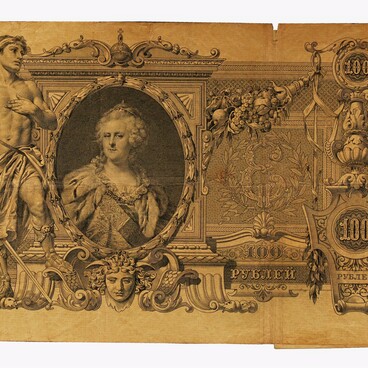The History and Art Museum houses the certificate of Antony Polozov, a resident of the village of Shebekino. In 1917, he graduated from the Maryinskaya Agricultural School on the estate of brothers Alexander and Nikolay Rebinder.
The Maryinskaya School was opened in 1875, and it became the first professional educational institution in Belgorod Oblast. It was named after Maria — Alexander Rebinder’s wife. The school was originally intended for agricultural laborers, but from 1884 new subjects were to be taught, such as sugar beet processing, distillery business, repair of farm implements and tools.
The Rebinders, who owned the Shebekino estate, allocated money to support the school — from 7 to 10 thousand rubles per year. Another 2.5 to 3.5 thousand rubles came from the state treasury. These funds were used to pay the teachers, support the students, buy furniture, textbooks and so on.
In order to enter the Maryinskaya Agricultural School, boys, who were 14 years old or older, had to pass exams and prove their knowledge of general subjects from the two-class ministry school course. Children from all social strata — the nobility, peasants, townspeople, as well as the sons of priests — were eligible for studying. However, it was mostly attended by peasant children — the “boarders” who lived and studied there free of charge. For example, in 1913, 42 out of 50 students were peasants; the rest belonged to other social classes.
The course of study at the Maryinskaya School was three years. In the fall and winter, students studied theory, and in the summer, they had practicums and worked at the Rebinder estate. Their working day was equal to the day of an adult worker and they were paid 32 kopecks per day (16 kopecks in winter). However, the pupils did not receive their salary — instead, the Rebinders provided them with free meals, and at the end of the school year gave them valuable awards: books and watches. After leaving school, the graduates got help with their employment in Shebekino or elsewhere.
In 1920, the Maryinskaya School was transferred to the city of Rylsk, and later it was turned into an agricultural technical school.
The Maryinskaya School was opened in 1875, and it became the first professional educational institution in Belgorod Oblast. It was named after Maria — Alexander Rebinder’s wife. The school was originally intended for agricultural laborers, but from 1884 new subjects were to be taught, such as sugar beet processing, distillery business, repair of farm implements and tools.
The Rebinders, who owned the Shebekino estate, allocated money to support the school — from 7 to 10 thousand rubles per year. Another 2.5 to 3.5 thousand rubles came from the state treasury. These funds were used to pay the teachers, support the students, buy furniture, textbooks and so on.
In order to enter the Maryinskaya Agricultural School, boys, who were 14 years old or older, had to pass exams and prove their knowledge of general subjects from the two-class ministry school course. Children from all social strata — the nobility, peasants, townspeople, as well as the sons of priests — were eligible for studying. However, it was mostly attended by peasant children — the “boarders” who lived and studied there free of charge. For example, in 1913, 42 out of 50 students were peasants; the rest belonged to other social classes.
The course of study at the Maryinskaya School was three years. In the fall and winter, students studied theory, and in the summer, they had practicums and worked at the Rebinder estate. Their working day was equal to the day of an adult worker and they were paid 32 kopecks per day (16 kopecks in winter). However, the pupils did not receive their salary — instead, the Rebinders provided them with free meals, and at the end of the school year gave them valuable awards: books and watches. After leaving school, the graduates got help with their employment in Shebekino or elsewhere.
In 1920, the Maryinskaya School was transferred to the city of Rylsk, and later it was turned into an agricultural technical school.



